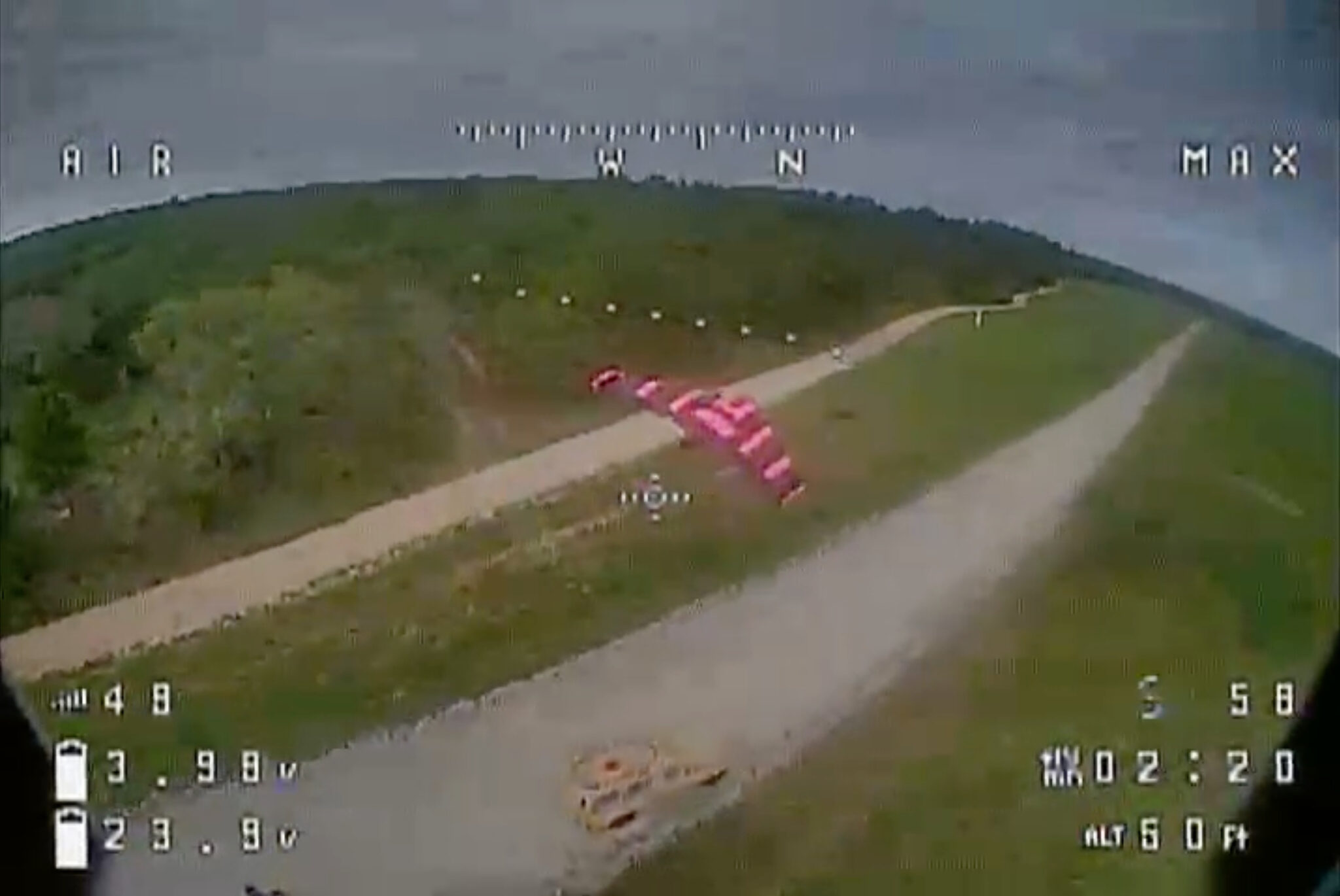Screenshot from a video showing the Army’s first air-to-air drone kill.
So the U.S. Army just announced a shiny new milestone: an air-to-air drone kill. A SkyRaider quadcopter, armed with a Claymore mine, downed another unmanned system in a test at Fort Rucker, Ala. Army brass grinned. Someone got a challenge coin. Press releases went out. Somewhere, a contractor started drafting a PowerPoint for a $40 million follow-up.
But here’s the punchline, folks: the Army’s celebrating like it just split the atom, when the Ukrainians and Russians have been doing this in bulk for nearly two years.
Air-to-air drone combat is no longer the future of warfare. It’s the damn standard. And we’re treating it like a TED Talk.
This Ain’t the Birth of a Doctrine—It’s a Belated Admission
Let’s be clear: the Army didn’t invent air-to-air drone warfare. They arrived late, sweaty, and out of breath to a fight that’s been raging over the trenches of Donetsk since 2022. In Ukraine, FPV drones are now hunter-killers, not just bomb-droppers. They’ve been engaging enemy drones mid-flight—dogfighting, if you can believe it—with nets, explosives, and kinetic impact. Some even use anti-drone drones launched in flocks.
In one case, Ukrainian drone pilots filmed their quadcopter chasing down and ramming a Russian UAV midair. No fanfare. No news release. Just another Tuesday.
And over in Russia, DIY drone swarms have developed rudimentary intercept capabilities, using cheaper models to crash into more expensive ones. They’re building kamikazes faster than we’re writing doctrine.
So when the U.S. Army crows about its “first air-to-air kill,” you almost want to pat them on the head and say, Cute. Welcome to the party. Here’s a map of where everyone else is on the dance floor.
Too Much Lab, Not Enough Trench
The fundamental difference isn’t technology. It’s urgency. America tests in controlled environments. Ukraine tests under fire. Their pilots improvise in bunkers with $300 and a soldering iron. Ours have to fill out forms, attend briefings, and wait for procurement cycles to spin.
What they call a “capability demo,” Ukraine calls “breakfast.”
Worse, we’re approaching this like it’s just another line item under the Future Vertical Lift program. But air-to-air drone combat doesn’t need another acronym. It needs scale. Speed. And permission to improvise.
War’s Gone Small, Fast, and Vertical
This is no longer about who controls the air at 30,000 feet. It’s about who controls it at 30 meters. Tactical superiority now happens between treelines, across backyards, and over alleyways—where swarms can sense, chase, and strike faster than any human operator can think.
And that’s where the Ukrainians and Russians have leapfrogged us. They’ve turned FPV drones into dueling pistols—deadly, cheap, and everywhere.
We’re just now putting bayonets on ours.
Time to Shut Up and Field It
So yes, Army. Good job. Your quadcopter killed another quadcopter. Now replicate that a thousand times over, give it to 19-year-olds with joysticks and guts, and drop the bloated acquisition bloatware.
Because the only thing worse than fighting the last war is beta-testing the next one while someone else is already killing with v3.5.
If we’re serious about preparing for tomorrow’s battlefields, we have to stop acting like we just discovered fire every time a drone does something smart.
Because over in Ukraine, fire’s already raining down. From the sky. On wings. With teeth.


